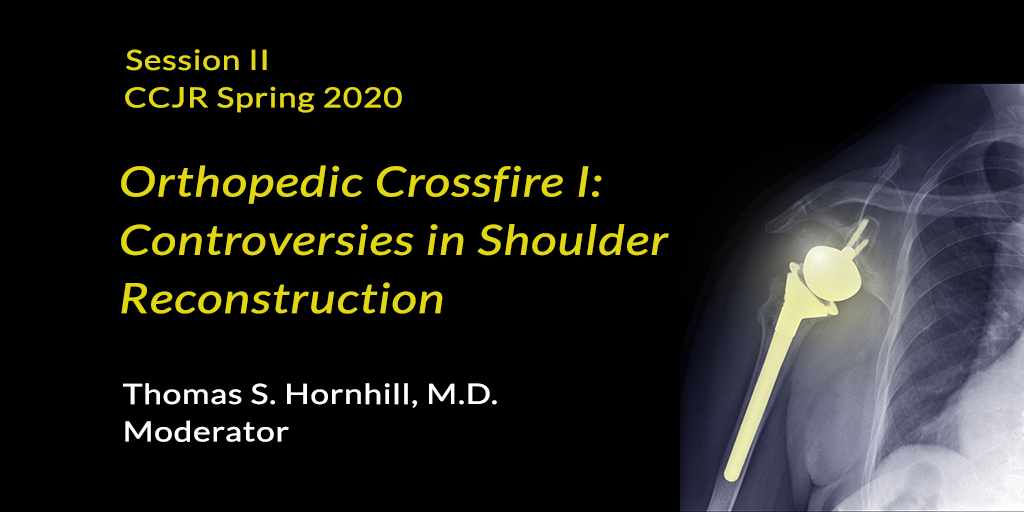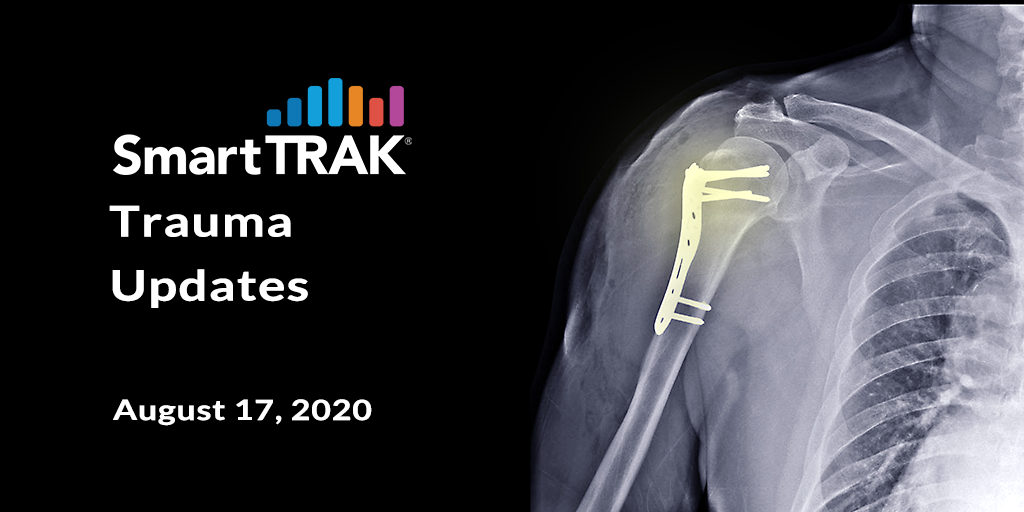 While reverse TSA has grown in popularity, is it always the best option?
While reverse TSA has grown in popularity, is it always the best option?
Reverse total shoulder arthroplasty (RTSA) was a hot topic during the Current Concepts in Joint Replacement (CCJR) Spring 2020 meeting, held virtually due to the COVID-19 pandemic. Several Orthopaedic Crossfire discussions revolved around RTSA, and surgeons debated several issues, including whether RTSA should be the standard of care for glenohumeral arthritis. The reverse shoulder market segment comprised 54.6% of US Shoulder Market revenue in 2019, compared to 37.1% for anatomic shoulders, according to SmartTRAK estimates.
Taking the pro stance for RTSA as the standard of care for glenohumeral arthritis, Sumant G. Krishnan, MD of Baylor University Medical Center, Dallas, Texas, reported 2019 AAOS Shoulder and Elbow Registry data shows 60.3% of procedures used RTSA, compared to 36.6% anatomic total shoulders. This paralleled Baylor University’s experience with the number of RTSA procedures increasing from one implanted in 2003 to 247 RSAs in 2019.
Dr. Krishnan outlined several factors leading to the increasing popularity of RTSA. He pointed out that glenoid deformity is most often a multiplanar pathology making it difficult for an anatomic total shoulder to truly function “anatomically” in the diseased shoulder. Also, almost 25% of people or more have pathology in the rotator cuff, a major indication for RTSA. Next-generation RTSAs now more natively restore the center of rotation and can recruit both the deltoid and the cuff functionality resulting in more reproducible durable mid-term outcomes with >90% survival.
Dr. Krishnan shared that if you look at current data showing anatomic vs reverse procedures by age groups, the data intersects at age 50-55 yrs old with patients 55+ showing rotator cuff disease. Those are the patients he considers for RTSA – patients with non-concentric shoulder center of rotation who are older than 60 years old with rotator cuff issues.
Taking the opposing stance, Eric R. Wagner, MD, MS of Emory University, Atlanta, Georgia, admitted that anatomic total shoulders (ATSA) have limitations with regards to glenoid fixation and rotator cuff integrity. However, he put forth that recent innovations have addressed the issue of posterior glenoid bone loss. According to Wagner’s presentation, ATSA augments currently on the market can correct up to 25° of glenoid retroversion and 75% posterior subluxation.
Reverse shoulders are not without their issues such as impingement and inconsistent internal rotation. Wagner also argued that RTSA often leaves patients with limitations in their activities of daily living and return to sports such as swimming, golf, skiing, tennis and fishing. Also, if an RTSA requires revision, the reverse glenoid can leave large peripheral defects whereas a poly glenoid for an ATSA is easier to revise and stemless anatomic humeral components also allow for easier revision due to their bone sparing nature.
In Dr. Wagner’s practice, he considers using an ATSA over an RTSA if the patient has an intact or small/partial thickness tear of the rotator cuff, glenoid retroversion less < 25°, posterior subluxation <80-85%, superior inclination <15-20° and an age < 55-60 years old. Dr. Wagner estimates that 40% of his current total shoulder arthroplasty cases are ATSA with 60% being RTSA with aggressive use of glenoid augments.
Given the arguments, it appears that there is not one “gold standard” for treating glenohumeral arthritis. Patient age, post-surgery expectations, and pre-surgery shoulder conditions such as rotator cuff damage and joint center-of-rotation all factor in to which implant choice is optimal.
But what does the future look like? Dr. Krishnan expects the future to evolve beyond pre-op planning software that doesn't currently consider all aspects of the diseased shoulder. He envisions the future of shoulder arthroplasty may be driven by artificial intelligence technology to reconstruct the shoulder working backward from an individual patient’s pathology to a “normal shoulder” to manufacture an “anatomic reverse total shoulder arthroplasty.”
SmartTRAK is the leading source of competitive intelligence used by the top 10 global orthopedic & top 15 wound care companies. If you would like a demo of all SmartTRAK has to offer and how we can help increase proficiency, improve productivity and reduce costs for your company, just click the button below.







